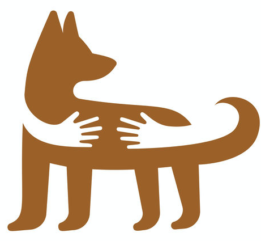The best way to train dogs is to do it the way they do.
The way dogs train themselves is by submitting to the rules and boundaries provided by pack leaders. The question is how do they do that, and how might their behavior inform the way we train our own dogs.
In this article, I will attempt to answer those questions. I will explore how the leaders establish discipline in the pack and will pull from the work of expert dog trainer Don Sullivan and his book Wake Up and Smell the Poop (2012) to do so. I will consult animal behaviorist Linda Cole and then provide examples from my own dogs of how leadership works itself out in a modern grouping of dogs. Finally, I will extrapolate from these examples to explain a sure-fire way to train dogs, using their own methods to guide us.
Dog/Wolf Pack Behavior in the Wild
In general, dogs are social animals with a well-defined pack hierarchy (Cole, Understanding Pack Hierarchy and Why It Matters). As such, they understand pecking order and boundaries. Like the wolf pack, each individual in the group has his/her own place in that social order. The leaders are the alpha male and alpha female. The omega is the lowest member. Other pack members will fall in between the alpha and omega.
A member’s place in the pack will generally be determined by his/her desire and ability to control the other members; some animals have a strong desire for this while others do not. A dog’s relative ability to control the other members of the pack will, in turn, determine the respect s/he gains from them. Control or dominant behavior is demonstrated in a number of ways: The alpha male, for example, might use blocking, moving in between dogs, standing alert with tail held high (a sign of confidence), low growling whenever another dog comes near when s/he shouldn’t, or making eye contact and holding it.
Once the alpha male’s position has been established, he is the only one who leads and makes all the decisions that the entire pack follows. This would include when and where to hunt and when the rest of the pack can eat. He will also be the only dog allowed to mate with the alpha female.
The alpha female has her own role to play. It is her job in particular to discipline the pups and she will use increasing levels of force to do so. She does this by giving them little nudges and nips around their neck and ears. These gentle reminders and punishments the pups learn from their mother will remain with them throughout their lives.
Of note is that neither the alpha male nor alpha female allow unwanted behavior to go unpunished. This would cause confusion and a breakdown in the pack social order which in turn creates an unstable pack. So there are always consequences for misdeeds.
There is one final and important point. Neither the alpha male nor the alpha female will bribe other members of the pack with food or treats to make them behave. On the contrary, the pup or weaker member will give up his/her food to the more dominant member as a sign of submission
Dog Pack Behavior Observed in a Domestic Environment
Watch any group of dogs in a human environment, and you will see the pack behavior I described above. I have had the great privilege of watching this with my own dogs and have learned that training which borrows from a mother dog’s approach with her youngsters is the best way to train a dog.
In my backyard Molly is top dog while Mari, one of the youngsters, is second in command. Lula is the third and most submissive member of this little group.
Molly the alpha female establishes ultimate authority swiftly and appropriately by showing the youngsters when they’ve crossed the line of acceptable behavior. Crossing the line of acceptable behavior might include Mari coming over to me while I sit in a chair and jumping up with her front paws on my lap. Molly would show her displeasure by grabbing Mari by the back of the neck and biting down with the force equal to this offense.. Once Molly is satisfied that Mari got the message, she backs off.
Mari, in turn, exerts her dominance over Lula by chasing her. But Lula seems to love this and will egg on the chase, ultimately taking refuge in one of the large holes dug by the dogs for cooling in the summertime.
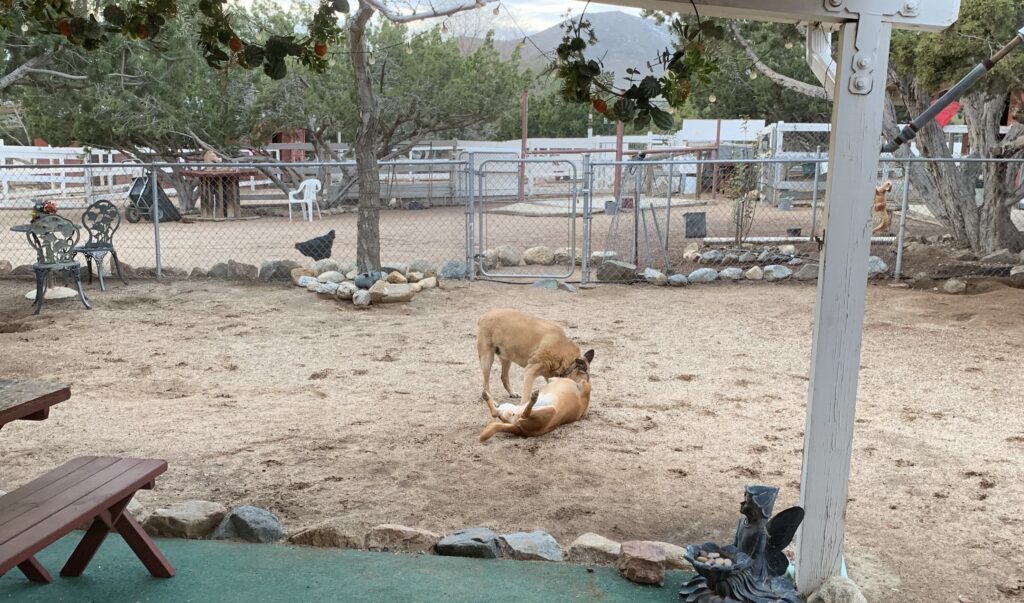
The interesting part of all this is that Mari and Lula, so disciplined by our dominant Molly, still love her and will lavish her with affection. You can observe this in the picture below where Molly has just come out of the house, and Mari and Lula greet her with licks and nuzzles. And it’s reciprocal. Molly will regularly lick Lula and Mari on their muzzles as well. So love and affection is a big part of the training equation. But once again, just as in a wild dog pack, food to gain submission or manipulate behavior is never part of the equation.
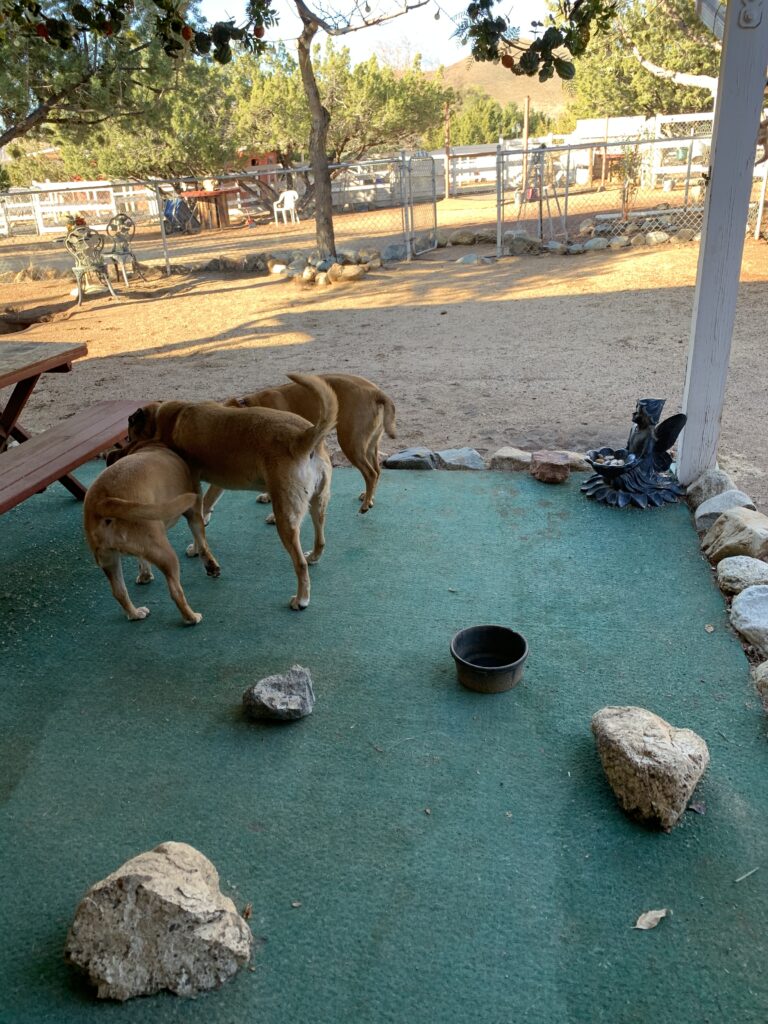
HOW HUMANS CAN FOLLOW THE DOG’S LEAD
The best way to show your dogs just how much they mean to you is to provide them with the boundaries you expect them to adhere to so that they know who is in charge and what the rules are. At the same time, you will be communicating to them their rightful place in the pack hierarchy because you, the alpha leader, have set the parameters they will live by. Without this the dogs can become confused and anxious, often acting out in “unwanted” behaviors.
Although human beings do not have the anatomy, skill or teeth to correct pack member behavior like dogs, there are things we can do, techniques and equipment we can use which will trigger an understanding in the dog. These techniques and equipment mirror the way the alpha male or female corrects unwanted behavior and maintains order in the pack.
Equipment, for example, includes collars which press against the dog’s neck the way a mother’s bite would to get the submission she is after.This kind of approach is very direct and tells the dog in no uncertain terms what is desired, who the leader is, and where the dog fits in the hierarchy. Anything other than this kind of clarity becomes confusing and frustrating to the dog and potentially dangerous for the handler down the line.
Below are some of the tools I use to communicate with the dog during training sessions.
A. Suggested Equipment
- COMMAND COLLAR
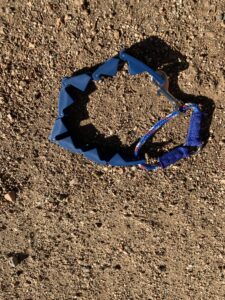
The command collar on the right has been designed by Don Sullivan to exert a force akin to a mother dog’s nip when placed around a dog’s neck. The protruding points on the collar help to accomplish this when the handler gives a tug on the leash along with a verbal command.
Below is a picture of how the collar and lead line look when attached to the dog.
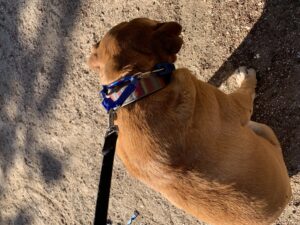
A tug backwards on the leash allows the points of the collar to close in on the dog’s neck much like a mother dog’s teeth. Also, like a dog’s teeth, the collar can be used with varying amounts of force depending on the strength of the tug. This takes some practice and will change with different dogs. Some dogs are more sensitive to the collar effect than others.
2.Prong collar
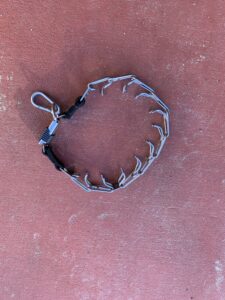
The prong collar shown at the left operates like the command collar but is a step more severe. It is used on dogs for which the command collar doesn’t have enough bite, as it were. Interestingly, the prong became the go-to collar at the dog rescue I worked at. In other words, with few exceptions it was the collar I routinely used on the dogs when I first started working with them to get their attention. The command collar was then used as we got into the training and the dogs began to understand the meaning of the corrections.
The reader will note that the typical flat cloth collar most people use on their dogs is not shown here. That’s because this type of collar is NOT a training collar. It is good for displaying your dog’s tags, and that’s about it. Nor have I listed breast collars popular with many owners who can’t bare to see their dogs straining against the esophagus as they pull the handler along; so they buy a breast collar and let him pull them along against that.
Also popular (with me too) is the Gentle Leader that fits a dog’s head much like a halter on a horse. This is actually a lovely piece of equipment but it is NOT a training collar. It can be used AFTER a dog is trained but not before.
3.Leashes
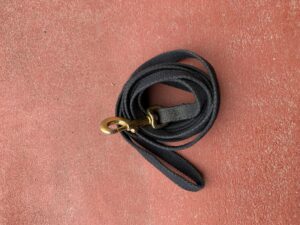
I like to use a 10-foot lead line to allow the dog plenty of room to roam. This is especially true in the beginning stages of training when the dog is just getting used to what his handler wants. Heeling and a more close-in posture of the dog next to the human can come gradually a bit later

The leashes to the right were developed by Don Sullivan and are of different lengths to accomodate different stages in a dog’s training. The 10-foot line at the top of the picture is used to start a dog much like the 10-foot cloth lead on the left. The six-inch leash in the middle of the ensemble is for a more advanced dog and can be attached to his collar while he’s in the house. The handler may just want to have something to grab quickly in case the animal needs a “refresher course.” The three-foot line at the bottom is for a dog in the middle stage of his training who has indicated his respect for the handler. By that I mean the dog doesn’t pull on the leash and walks fairly close to the handler consistently without getting distracted.
All the leashes on the right are made of a very light material to allow the handler to drop the leash without the dog feeling restricted by its weight. The handler may want to occasionally do this to test the dog’s obedience.
4.Muzzle

A muzzle can be an invaluable piece of equipment for the training of some dogs. Very often when the dog feels under pressure to submit to the trainer, s/he will object by wanting to snap or bite. This is a direct sign in no uncertain terms that the dog believes s/he has a right to challenge the authority of the human. I found that this behavior usually shows up when asking for the “down” command because a prone position on the ground is the most submissive position a dog can take opposite an authority figure; the dog may want to test the resolve of the handler when s/he asks for this position. The biting behavior may also occur when asking for a “sit,” but not as often as when asking for the down posture in my experience. The muzzle on the dog in these cases protects the handler from harm and takes the dog’s mind off his/her teeth for retaliation and rather transfers his/her focus onto the request that is being asked.
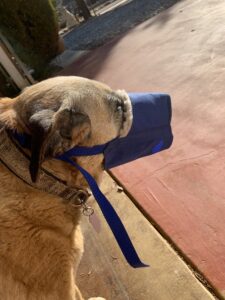
Molly is shown on the right modeling one of the muzzles I have for training.
In addition to protecting a trainer from a dog’s propensity to bite, a muzzle becomes a calming device for a dog that just can’t focus. This tendency towards hyperactivity may assert itself in a dog that throws him or herself on the ground and thrashes about when asked to do something. Or a dog may find it necessary to dart all over the place on the leash rather than walking calmly ahead. Because the teeth are taken away as a retaliatory tool by the muzzle, the dog is left with nothing else to do but pay attention.
5.Gloves
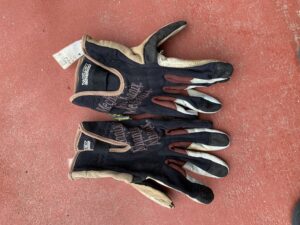
The last piece of equipment that I consider essential to training is a sturdy pair of gloves. Gloves are for the trainer’s protection to keep the hands covered and safe no matter what the dog student may throw at him or her.
B.A Method Which Makes Sense to the Dog
A dog’s mind is hard-wired to understand hierarchy for survival. Hierarchy is that system in which dogs are ranked one above the other in a dog pack according to status or authority, It is the alpha male/female who have the highest position of authority in the pack and thus assume the position of leaders.
Training which captures a dog’s understanding of hierarchy and helps him/her accept the human being in the position of leader in the human environment (where the human expects obedience to his/her commands) is training which makes makes sense to the dog.
1.Become the Alpha for Your Dog
Many dogs outsmart and outlast their handlers in the struggle for who leads the pack,
Becoming the alpha for one’s dog takes persistence, presence of mind, and confidence on the part of the handler. It also requires the use of a training method which combines a mixture of praise and discipline.
2, Use A Clear, Consistent, Firm Hand that the Dog Understands.
A firm hand, brief, repeated disciplinary action or a stern command may appear strong or harsh to a bystander, but it is the language a dog understands from the moment of its birth.
The handler can help the dog avoid confusion over who is in charge by communicating in this manner. This means using words and appropriate body language consistent with each separate command so the dog can sort it out. (Sullivan, p.61).
3.Don’t Indulge in Unnecessary Shielding or Coddling
Unnecessary shielding or coddling may be the go-to reaction of many of us with our small dogs whom we may want to protect from an unwanted approach of a larger dog, for example.
This “protection” usually takes the form of picking the small dog up when a big brute approaches so the little guy won’t be in danger of being overcome. That’s how we see it. But the small dog does not look at it that way. More often than not, the small dog will sense the handler’s fear and see it as his/her job to protect the poor human with a lot of yapping and barking intended to ward off the bigger canine intruder.
But it is not necessary to shield a small dog in this way. In fact, Sullivan notes that the owner who gives up just one “shielding” reaction to supposedly protect a small dog when in public would likely witness improvements in other areas of his/her dog’s behavior patterns. He goes further by saying that “strategic avoidance” should only be used in extreme circumstances or the dog will never learn how to effectively deal with his/her surroundings.
The attitude of “giving the dog a chance to deal effectively with his/her surroundings” also applies to the rescue dog brought into our home for the first time. Keep in mind that a “rescue” dog allowed into an existing dog pack would not be indulged. S/he would be expected to abide by the same rules as the other dogs and would not be given special treatment just because s/he is a “rescue.”
4.Praise the dog with appreciative words and a rub
Praise and affection when it is deserved. along with discipline are essential in enhancing the dog/handler bond. The kind of praise I’m talking about includes a rub, a pat, and kind words which show the handler’s appreciation for the dog and his/her effort to please.
And there’s something special about human praise which enhances the training protocol.
Praise and affection from the human being in equal measure towards all the dogs in a pack may be the one great gift we as humans have to offer the dog. The human is capable of giving affection to each dog regardless of his/her standing in the hierarchy. I am able to work with each dog separate and apart from the pack hierarchy, establish a relationship, and praise EACH dog for his/her uniqueness and willingness to please.
Treats given in the dog’s food dish apart from the training routine is a different matter and is perfectly okay as long as the dog is not overweight.
THE REWARDS OF A TRAINED DOG;THEY GIVE BACK MORE THAN WE ASK
Dogs want to please us and be our protectors. But they need to know where they fit in the hierarchy to do so. Will they love us as leaders or followers? To love us as leaders, we must gain their respect. But respect can’t be forced. You have to earn it by controlling each member of your pack on his/her terms.As soon as you begin working with your dog in a manner that logically reflects his way of thinking and perceiving, you will earn his respect. Certain problem behaviors that have not been fully addressed in training will disappear.

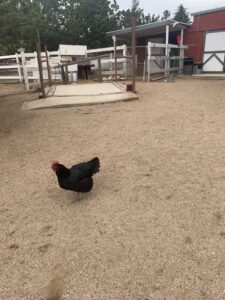
RESPECT IS KEY AND LOVE WILL FOLLOW
There are no dumb dogs. If a dog has been “trained” to respond to a certain command but doesn’t, it is because s/he doesn’t respect the handler enough to do what is asked.
REFERENCES
Cole, Linda, Understanding Pack Hierarchy and Why It Matters, dark-horse-adaptations.blogspot.com, 2009
Sullivan, Don, Wake Up and Smell the Poop: The Myths, Deceptions, Lies and Obsessions That Keep You From Having the Perfect Dog, Xlibris Corporation, 2012
